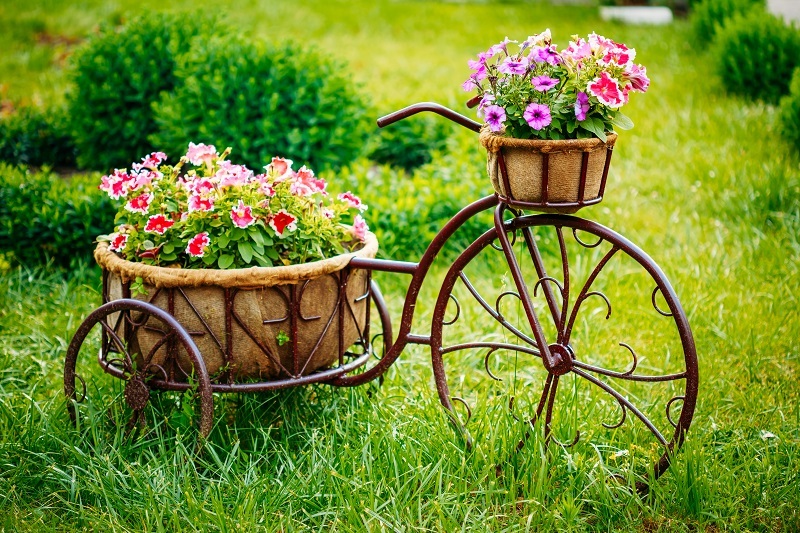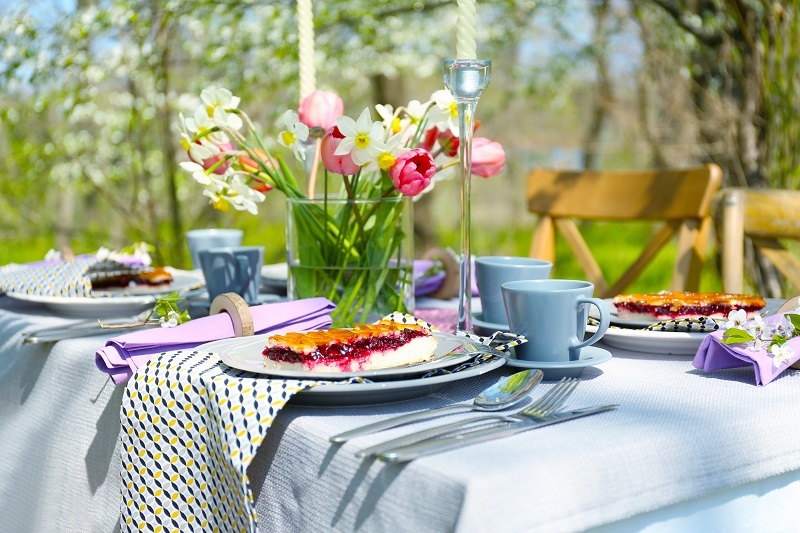Tips for Keeping Your Poinsettias Fresh and Vibrant Through the Holidays
Posted on 06/09/2025
Tips for Keeping Your Poinsettias Fresh and Vibrant Through the Holidays
Poinsettias are an iconic symbol of the holiday season. With their vivid bracts and festive appearance, these plants bring seasonal cheer to homes, offices, and businesses worldwide. However, many people struggle to keep their poinsettias looking fresh and vibrant throughout the holidays. Fortunately, with the right care and attention, you can enjoy these beautiful blooms long after the festivities are over. In this comprehensive guide, you'll discover expert tips and techniques for maximizing the longevity and brilliance of your poinsettias this holiday season.
Understanding Poinsettia Plants: What Makes Them Unique?
Before diving into maintenance tips, it's essential to understand the unique needs and characteristics of poinsettias. Native to Mexico and Central America, poinsettias (Euphorbia pulcherrima) are actually shrubs in their natural habitat. The brightly colored "flowers" are not true blooms, but modified leaves known as bracts. The actual flowers are the tiny yellow clusters nestled in the center of the bracts.
- Poinsettias are photoperiodic: They need extended periods of darkness to produce their colorful bracts.
- Temperature-sensitive: They thrive in warm, stable indoor conditions and are sensitive to cold drafts and temperatures.
- Moisture balance: Their root systems are prone to rot if overwatered, yet they wilt quickly when too dry.

Choosing the Best Poinsettia for Longevity
The first step in ensuring your poinsettia stays fresh and vibrant during the holidays is selecting a healthy plant. Not all poinsettias are created equal. Here are a few pointers for choosing a high-quality, long-lasting poinsettia:
- Inspect the foliage and bracts: Look for plants with dark green, healthy leaves all the way to the soil line. The colorful bracts should be bright and free from wilting or discoloration.
- Check the cyathia: The small, yellow-green true flowers (cyathia) in the center of the bracts should be tight and unopened. If they are already dropping pollen or missing entirely, the plant is past its peak.
- Assess root and stem health: Gently check the base for any signs of rotting or mushiness. Skip any plant with an off smell or with stems that are soft to the touch.
Ideal Placement for Poinsettias Indoors
Location is crucial for maintaining your holiday poinsettia's freshness and color intensity. To best mimic their native environment and prevent leaf drop, follow these placement tips:
Maximize Sunlight Exposure
- Place your poinsettia near a window with bright, indirect sunlight for at least six hours a day. A southern, eastern, or western exposure is best.
- Avoid direct harsh midday sun, which can scorch the leaves.
Avoid Drafts and Temperature Extremes
- Keep away from cold drafts: Don't place poinsettias near doors, fireplaces, or HVAC vents, as sudden temperature changes can stress the plant.
- Maintain even temperatures: The ideal range for poinsettias is between 65?F to 75?F (18?C to 24?C) during the day, and not below 60?F (15?C) at night.
Monitor Humidity Levels
- Poinsettias prefer a moderate humidity level. If your home is very dry in winter, consider using a humidifier or placing the plant tray atop a bed of damp pebbles (without letting the pot sit in water).
Watering Techniques for Lasting Vibrancy
One of the most common mistakes is either overwatering or underwatering your poinsettia. Too much moisture can lead to root rot, while too little causes wilting and leaf drop. Here's how to get it just right:
- Check soil moisture regularly: Stick your finger about one inch into the soil. Water when it feels dry to the touch, but before the plant wilts.
- Water thoroughly, then drain: Remove any foil wrapping or make sure it has drainage holes. Water until it drains out the bottom, then empty the saucer to prevent roots from sitting in water.
- Avoid waterlogging: Never let your poinsettia sit in excess water. Consistent sogginess is a death knell for healthy poinsettias.
Fertilizing for Festive Poinsettia Brilliance
During the holiday display period, fertilizer isn't always necessary if you purchased your poinsettia from a reputable grower. However, if you want to keep your poinsettia alive beyond the holidays, light feeding every 3 to 4 weeks with a balanced, all-purpose houseplant fertilizer can help maintain its color and overall health. Always follow the instructions on the fertilizer label, and never fertilize a dry plant as it may cause root burn.
Pruning and Pinching: Post-Holiday Care for Poinsettias
If you're planning to keep your poinsettia past the holiday season, pruning encourages bushy growth and prepares the plant for potential reblooming next year.
- After blooming: In early spring, cut back stems to 4-6 inches to promote new growth. Continue regular watering and feeding.
- Pinch shoots: When new branches reach about 6 inches, pinch out the tips to encourage a fuller plant. Repeat every few weeks until early September.
Poinsettia Myths and Misconceptions
There are many myths surrounding these festive plants. For years, many believed they were highly poisonous, but recent research shows they're only mildly toxic and rarely cause more than a mild stomach upset in pets or children. Still, the milky sap may irritate skin or eyes, so it's best to handle with care and keep them out of reach of pets and young children.
Fact check:
- Poinsettias are not deadly to pets: But ingestion may cause mild nausea or vomiting. Seek veterinary advice if large amounts are eaten.
- Not all poinsettias drop leaves quickly: Healthy, well-cared for plants can last for months indoors.
- Poinsettias don't require complicated care: Just a few simple adjustments go a long way in prolonging their beauty.
Decorating with Poinsettias: Tips for Stunning Displays
Arranging your poinsettias creatively can maximize their festive impact and help maintain their vibrancy:
- Cluster several plants: Arrange different colored poinsettias together for a bold, layered display. Use varying pot heights for visual interest.
- Accessorize: Pair with natural elements like pinecones, ornaments, or ribbons to blend your plants seamlessly with the rest of your holiday decor.
- Safe container choices: Avoid metallic or glass containers without drainage, which can cause water to accumulate at the roots and lead to rot.
- Rotate periodically: Rotating your poinsettia every few days ensures all sides receive even light exposure, which prevents leaning and pale leaves.
Reviving Wilting or Droopy Poinsettias
Even the best-cared-for holiday poinsettias can occasionally wilt. If your plant looks unhappy:
- Check moisture levels: Dry soil causes wilting; a thorough watering may revive the plant.
- Avoid temperature shock: If you've recently moved the plant or had a cold draft, try relocating to a more stable spot.
- Check for root rot: Remove the plant from its pot and inspect the roots if wilting persists despite correct watering.
- Remove damaged leaves: Trim away any yellowed or fallen leaves to prevent fungal issues and encourage new growth.
Extending Poinsettia Life: After the Holidays
Many poinsettia enthusiasts are surprised to learn that these plants can be kept for years. If you love the challenge, here's how to care for your poinsettia post-holiday:
- Cut back: In late winter or early spring, prune stems to about 6 inches. Reduce watering slightly as growth slows.
- Move outdoors: Once night temperatures are consistently above 55?F (13?C), place outdoors in a lightly shaded spot. Resume regular watering and fertilizing.
- Repot if necessary: If roots fill the pot, gently transfer to a slightly larger container with fresh soil.
- Prepare for winter color: To encourage bract coloration for next year, poinsettias need long, uninterrupted dark nights (at least 14 hours darkness from mid-September through November). Cover with a box or place in a dark closet each night, exposing to bright light by day.

Frequently Asked Questions About Poinsettia Care
How long do poinsettias last indoors?
With proper care, your holiday poinsettia will remain beautiful for 6-8 weeks, and potentially longer if kept healthy after the holidays.
Why are the leaves turning yellow or dropping?
Leaf drop commonly results from overwatering, sudden temperature changes, or exposure to drafts. Check your watering schedule, and adjust the placement if you notice consistent issues.
Is it possible to rebloom poinsettias after the first year?
Yes! With patience and strict adherence to photoperiod requirements in fall, your poinsettia can produce vibrant bracts for another holiday season.
Summary: The Secret to Lush, Long-Lasting Holiday Poinsettias
Keeping your poinsettias fresh and vibrant through the holidays is all about consistency and attention to their unique needs. Select a healthy plant, provide optimal light and temperature, water carefully, and avoid drafts. With just a little effort, you can enjoy stunning, joyful poinsettias as the centerpiece of your festive celebrations. For those who wish to cultivate these plants year after year, post-holiday care offers a fun challenge with brilliant rewards.
- Choose healthy plants for the best start
- Maintain steady warmth and humidity
- Avoid overwatering and drafts
- Get creative with arrangements for maximum impact
With these expert holiday poinsettia care tips, your seasonal displays will radiate festive beauty and warmth throughout the entire winter season.
Latest Posts
Essential Tips for Mastering Orchid Care at Home
The Real Reason We Gift Red Roses on Valentine's Day
Discover Which Bloom Best Reflects Your Unique Personality
Discover 7 Surprising Facts About Tulips You Probably Never Heard Before
Discover Your Birth Flower and Uncover What It Reveals About Your Personality






